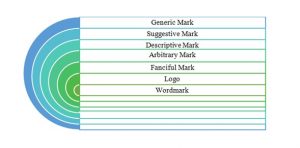By: Muskan Sharma
Death Penalty/Death Sentence/Capital Punishment is a state-sanctioned method of homicide in response to the commission of an offence. Death Penalty owes its origin to the Code codified by King Hammurabi of Babylon. In this code, Death Penalty was a punishment for 25 crimes.
At this moment, different nations use the following methods to execute death penalty on convicted persons:
- Hanging
- Lethal Injection
- Shooting
- Electrocution
- Beheading
- Gas inhalation
Earlier, violent methods like burning alive, disembowelment, blood eagle, back-breaking, crushing by animals, brazen bull, poison, suffocation, slow slicing were used. However, the practice of executing death penalty evolved over the time and less violent methods dominated over such inhuman methods. But the practice of death penalty, no matter the method of execution, is an inhuman act in itself.
Learn more about Criminal Laws with Enhelion’s Online Law firm certified Master Course!
Death Penalty v. Human Rights
There is a constant debate whether death penalty is violative of the concept of Human Rights? Some countries have abolished death penalty for being violative of the right to life and dignity whereas other countries do not abolish death penalty believing it has no connection with human rights.
However, in the USA, the concept of human rights is a little alien. In the USA, ‘Civil/Constitutional Rights’ have force, which focuses on securing equality to different groups. Hence, death penalty is not considered as violative of human rights within the territorial limits of the USA.
History of Death Penalty in USA
In England, Death Penalty was a punishment for numerous offences including petty offences like picking pockets or stealing bread. During the 1800s, around 270 offences were punishable with death penalty in England. Michigan abolished death penalty as a punishment in 1845. Later, Wisconsin also adopted the same approach in 1848. Therefore, both England and the USA reduced the number of capital offences and centred their focus on first-degree murders. Public executions also decreased gradually with time.
Learn more about Criminal Laws with Enhelion’s Online Law firm certified Master Course!
Death Penalty for Murder
The USA started doing away with the death penalty as a punishment in the 1950s and 1960s due to public protests against the same. As a result, no execution took place between 1968 and 1976 in USA. One of the landmark cases in the history of death penalty in the USA is Furman v. Georgia[1].
Furman v. Georgia, 408 U.S. 238 (1972)
Facts: The resident woke up in the middle of the night and found Furman committing burglary in the house. During the trial, Furman said that while escaping, he tripped and the weapon fired accidentally which resulted in the death of the victim. Since the weapon was fired during the commission of a felony, Furman was guilty of murder and therefore, subject to death penalty under the then existing laws. Though he was sentenced to death penalty, the same was never executed.
Decision: The Court, with a ratio of 5:4 held that death penalty is a cruel and unusual punishment and violative of the Constitution.
US Supreme Court’s decision in Furman case motivated almost 35 states to modify their laws concerning death penalty. However, two different approaches were adopted to modify the laws while abiding by the suggestions provided in the Furman case.
Learn more about Criminal Laws with Enhelion’s Online Law firm certified Master Course!
In the first approach, the state described which offences are punishable with death penalty along with mitigating and aggravating circumstances. A convicted person can only be sentenced to death penalty if the aggravating circumstances weighed more than the mitigating circumstances. This approach was adopted by Georgia, Texas, and Florida.
In the second approach, the state merely prescribed which offences are punishable with death penalty. Death penalty was mandatory in such prescribed offences and the Court did not need to consider mitigating or aggravating circumstances. This approach was favoured by North Carolina and Louisiana.
Learn more about Criminal Laws with Enhelion’s Online Law firm certified Master Course!
However, another case named Gregg v. Georgia[2] again proved to be a landmark judgment in the jurisprudence of death penalty in USA.
Gregg v. Georgia, 428 U.S. 153 (1976)
Facts: The defendant committed two armed robberies and two murders. Based on the amended laws, the Court heard the matter using the bifurcated procedure. The Georgia Supreme Court came to the conclusion of conviction and awarded death penalty for murder but vacated death penalty for armed robbery. In this case as well, the issue before the Court was whether a law that enables the Court to award death penalty is violative of the Constitution.
Decision: The Supreme Court observed that death penalty does not violate the Constitution. Courts cannot completely do away with the punishment of death penalty and that the statutes ensure that while awarding death penalty, the Court considers the circumstances of the offence, character of the offender, procedure to be followed.
Therefore, in Gregg v. Georgia[3], the decision of Furman case was overruled. US Supreme Court, via the decision in Gregg v. Georgia[4] held that death penalty is not violative of the Constitution. In this case, the Supreme Court went further and observed that the mandatory death penalty approach adopted by North Carolina and Louisiana’s statutes is unconstitutional. Thereafter, legal executions started again but at a slow pace. Only 50 death sentences were executed between 1977 and 1985.
However, one issue pending for a ruling was whether the punishment of death penalty was applied equally. The same was answered in McCleskey v. Kemp[5].
McCleskey v. Kemp, 481 US 279 (1981)
Facts: Warren McCleskey was convicted for committing two robberies and one murder. He was an African-American and he murdered a White Police Officer during the course of one of the robberies. He was sentenced to death penalty due to two aggravating circumstances: first, he committed the murder during the course of a robbery, and second, the victim of murder was a Police Officer engaged in the performance of his duties.
McCleskey preferred an appeal to the Federal Court and based his claim on a study performed by David Baldus, Charles Pulaski, and George Woodworth. The study depicted that the process of awarding death penalty was discriminatory i.e. individuals who murdered whites were likely to be sentenced to death penalty.
Decision: The Court disregarded the statistical study on the ground that it contained no substantial evidence that may justify the reversal of his conviction. The Court concluded that the conviction was right and the lower court applied the Georgia Law properly.
Death Penalty to Juvenile Offenders
After McCleskey v. Kemp[6], another landmark decision was put forward by the US Supreme Court in Roper v. Simmons[7].
Roper v. Simmons, 543 US 551 (2005)
Facts: Simmons (17-year old boy), along with his two friends Benjamin and Tessmer, made a plan to murder Shirley Crook. He planned to break into the house of the victim, commit a burglary, and kill him. However, Tessmer withdrew from the plan at the last moment. Benjamin and Simmon tied her up, covered her eyes, drove her to a state park, and then threw her off from a bridge. Simmon himself confessed to the murder.
Simmon was, therefore, convicted under the charge of murder. He moved to the trial court for setting aside the conviction on grounds of his age, impulsiveness, and troubled background. The trial court rejected his contention. The appeal went to the Supreme Court of Missouri and it concluded the case by awarding life sentence to Simmon with no parole. The decision of the Supreme Court of Missouri was based on the ground that death penalty awarded to juvenile offenders is violative of the eighth amendment of the constitution.
Learn more about Criminal Laws with Enhelion’s Online Law firm certified Master Course!
It was further appealed to the US Supreme Court.
Decision: The US Supreme Court held that awarding death penalty to an offender, who is below 18 years of age, is violative of the Constitution. This decision also overruled Stanford v. Kentucky[8] in which the court upheld the awarding of death penalty to offenders at 16 years of age or older than that.
Rape and Death Penalty
The US Supreme Court in Coker v. Georgia[9] held that death penalty awarded consequent to the rape of an adult woman is unconstitutional i.e. violative of the eighth amendment to the Constitution.
Coker v. Georgia, 433 US 584 (1977)
Facts: Ehrlich Coker escaped prison while he was serving multiple sentences for his conviction for rape, kidnapping, and murder. He broke into a house, raped the woman present in the house, and then stole the vehicle. He was convicted of rape, armed robbery, and other petty offences.
Decision: He was awarded death penalty for committing rape because of two aggravating circumstances, the first being prior conviction for capital offences, and the second being the commission of rape during an armed robbery. The Georgia Supreme Court upheld the death penalty.
But the US Supreme Court held that even though the rape was committed by a hardened offender during the course of another offence, it did not lead to the murder of the victim. It was observed that rape involves injury, physical and psychological, but the injury is not of serious nature. Therefore, the US Supreme Court overturned the death penalty awarded to Coker.
The question whether death penalty should be awarded for raping a child or not is answered in Kennedy v. Louisiana[10].
Kennedy v. Louisiana, 554 US 407 (2008)
Facts: Kennedy was convicted for the offence of raping his minor step-daughter causing serious injuries to her private parts. The Trial Court convicted him for the offence of rape and sodomizing a minor. Death penalty was awarded to him consequently.
On appeal, the Louisiana Supreme Court affirmed the conviction as Louisiana’s statute on Child Rape authorized death penalty.
Kennedy rested to appeal before the Supreme Court of the United States of America invoking the Eighth Amendment of the US Constitution. Eighth Amendment prohibits unusual and cruel punishments or excessive punishments through criminal sentences.
Decision: The US Supreme court reversed and remanded the case to the lower court for resentencing. The Court further observed that it is unconstitutional to impose death penalty for the crime of raping a child when the victim does not die and death was not intended.
Learn more about Criminal Laws with Enhelion’s Online Law firm certified Master Course!
International Law on Death Penalty
The Second Optional Protocol to the International Covenant on Civil and Political Rights (ICCPR) was adopted by the UN General Assembly, with the aim to abolish death penalty. It has 89 State parties.
Article 1 of the Optional Protocol provides that no person shall be executed within the jurisdiction of any of the State parties to the Optional Protocol.
Article 2 is an exception to what is stated in Article 1 and provides that the State party, may, at the time of accession or ratification, communicate the need for reservation for application of death during wartime. A State party may communicate the need for such reservation only for serious offences of military nature and further, let the Secretary-General know about the provisions concerning warfare within its national legislation along with the beginning and end of a state of war.
Articles 3, 4, and 5 further provide for the wide ambit of powers of the Human Rights Committee with respect to the State parties’ obligations towards the Second Optional Protocol.
Why Death Penalty needs to be abolished?
Abolition of Death Penalty or Capital Punishment in the USA is the need of the hour for the following reasons:
- The scheme for awarding death penalty to a convict is used in a discriminatory manner. A black or a person of colour is more likely to get death penalty as compared to a white. Also, it depends a lot on the net worth of the party, the attorneys they are financially capable of hiring, and the place where the offence was committed.
- Death Penalty, in its entirety, failed to serve the purpose of its existence. Death Penalty existed as a method of punishment based on the deterrent theory of punishment. However, numerous surveys have proved that death penalty was not effective in reducing the number of crimes being committed. Therefore, the deterrent theory of punishment needs to be disregarded in totality. Instead, the Rehabilitative theory of punishment must be considered by Judges and Magistrates while awarding punishments to convicted persons.
- Death Penalty is in itself a cruel and inhuman act. It is violative of the Right to Life and Dignity available to every person in this world. Death Penalty is a relic of early criminal codes and has no place in a country that considers the security of human rights as its top priority.
- Death Penalty is the abuse of due process of law. A statute that prescribes death penalty as a punishment for any offence, enables Judges and Magistrates to take the life of a person in the name of due process of law.
- Death Penalty is further violative of the maxim ‘audi alteram partem’ to an extent as the person who is executed, did not get the fair opportunity to represent himself before the Court and justify the reversal of his conviction.
- The International Law regime also does not support death penalty. Death penalty, as a punishment in the national legislations, disregards the Second Optional Protocol to the International Covenant on Civil and Political Rights (ICCPR). Though the USA is not a party to the Second Optional Protocol, it will be in the interest of its citizens and will display its commitment to secure human rights within its territorial jurisdiction.
Learn more about Criminal Laws with Enhelion’s Online Law firm certified Master Course!
Conclusion
Death Penalty is nothing less than State-sponsored terrorism. Judges and Magistrates are the authorities responsible to ensure the smooth conduct of State-sponsored terrorism in the name of death penalty.
It’s high-time that all states in the world must become party to the Second Optional Protocol to the International Covenant on Civil and Political Rights (ICCPR) and denounce the use of death penalty. Death Penalty deserves to be denounced also on the ground that it is cruel and inhuman.
Death Penalty, as a practice, is violative of the basic Right to Life and Dignity. Furthermore, it has served no useful purpose. Awarding death penalty did not work according to the deterrent theory of punishment. It did not aid in reducing the number of crimes being committed.
Learn more about Criminal Laws with Enhelion’s Online Law firm certified Master Course!
[1] 408 U.S. 238 (1972)
[2] 428 U.S. 153 (1976)
[3] Ibid.
[4] Ibid.
[5] 481 US 279 (1981)
[6] Ibid.
[7] 543 US 551 (2005)
[8] 492 U.S. 361 (1989)
[9] 433 US 584 (1977)
[10] 554 US 407 (2008)



